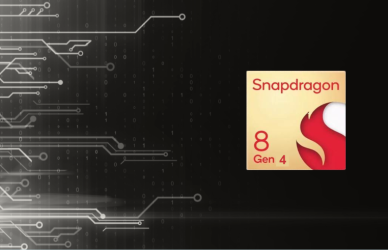What Are Computers Used For in Science?
Computers have greatly improved the fields of science, and they can now store and review massive amounts of data. The first large-scale computer was dubbed the “Colossus” and it was used during World War II to crack German codes. Computers are now capable of manipulating data at a much higher speed than humans can imagine. They can record data, analyze results, and design and engineer products. Despite all of these benefits, computers are still just as important as they were during the dawn of civilization.
Computers are used to process large amounts of meteorological information
Supercomputers are used by the National Weather Service (NWS) to analyze and predict weather patterns around the globe. The powerful computer uses complex mathematical equations to predict weather patterns, and it also produces large images of the weather phenomena it predicts. Once the computer has made its predictions, meteorologists refine and interpret the results. These computer models can predict everything from day-to-day weather conditions to severe weather conditions.
The National Weather Service (NWS) uses supercomputers to process meteorological information in real-time. They use computers to analyze billions of observations every day and to make forecasts. The data is then sent to the NWS director. A supercomputer can process this amount of data in less than a second, which is why meteorologists must work quickly. To process this much data, the NWS director needs to be able to run more than a million calculations at once.
Computers have advanced meteorological tools since the early 1900s. Weather balloons have been used to measure atmospheric conditions and send information back to Earth. In the U.S., radiosondes are launched twice a day from over 90 weather stations. Weather stations may contain weather forecasting tools, computer equipment to produce detailed maps of weather patterns, and weather balloons to collect data in remote locations. These systems are crucial for forecasting and research in the U.S. and abroad.
They are used to design and engineer products
Computers are highly sophisticated tools that enable people to design and engineer products with increased efficiency and accuracy. Computers have a variety of benefits, including vast storage, decision-making tools, and the ability to model complex designs. Computer-aided design (CAD) software allows designers in fields such as aerospace and automotive engineering to make 3D models of their designs. The system uses accumulated information from libraries of standards.
Scientists and engineers use models to make predictions and test designs. Models help them to imagine the world they are studying and test different hypotheses. Models allow engineers to evaluate designs and determine which one will perform the best under a set of conditions. These models help them understand the limitations of their proposed designs and make improvements, based on data collected during research. For example, a computer can simulate the behavior of a car’s brakes to determine how it will react to a sudden increase in friction.
As computer technology continues to progress at breakneck speed, engineers need to stay current with research and development to remain relevant in their fields. Computer engineers must understand the intersection between science and business to remain relevant. They must also be flexible and adaptable enough to become a team leader. Computer engineers are responsible for creating many of the technologies that make our lives better, more efficient, and more enjoyable. Careers in computer engineering offer ample opportunities to shape the future.
They can be used to buy and sell products
Whether it’s for writing, drawing, editing videos, or advertising, computers are used in many aspects of life. They have become an essential part of daily life, from buying and selling products to interacting with friends and family. In addition, computers make real-time communication with others over the internet possible, with services such as Skype and Zoom. Many computers are equipped with webcams and microphones to facilitate video conferencing.
Although the first computers were purely for numerical calculation, today computers are capable of general-purpose information processing and can handle huge amounts of data. Computers are also capable of routing telephone connections through networks and controlling mechanical systems. They are now cheap enough to be embedded into everyday items, including rice cookers. Listed below are some of the major ways computers are used in science and technology. These are not exhaustive lists, however.
They can process image and video data
Image and video processing is a field of computer science that deals with the analysis and storage of image and video data. The field has grown rapidly over the last decade. Recent advances include recurrent neural networks, which allow computers to take previous data into account when reviewing current data. For example, computer vision systems can detect the presence of an alien planet using a photograph taken from space. This is known as Augmented Reality.
The two main areas of computer vision are image processing and computer vision. Image processing is concerned with the preparation and enhancement of input images, while computer vision deals with understanding and extracting information from image and video data. It can even predict the behaviour of a computer based on its understanding of the content. Computer vision systems are being used to improve human safety by detecting signs of danger and accidents. It is a growing area of computing that is changing the world.
Medical diagnosis relies on image information, which makes up 90 percent of medical data. Computer vision algorithms are used for image segmentation and computer vision can help diagnose various types of diseases. Diagnosing diabetic retinopathy with computer vision algorithms is just one example of how image processing is transforming medical imaging. Computer vision algorithms can analyze pictures of the back of the eye to detect diabetes, rate their severity, and much more.
The science behind computer vision involves the study of how computers can reproduce human vision. The field includes the theory and algorithmic foundations of computer vision. These technologies are being used to automate tasks that a human visual system can do. From selfdriving cars to Facebook’s facial recognition technologies, computers can process image and video data. The future of computer vision is bright, as long as we can figure out how to make them better than human vision.



